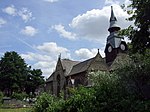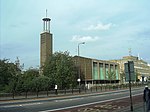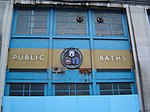Poplar Recreation Ground Memorial
1919 in LondonBuildings and structures completed in 1919Grade II* listed buildings in the London Borough of Tower HamletsGrade II* listed monuments and memorialsPoplar, London

The Poplar Recreation Ground Memorial is a memorial to 18 children killed at Upper North Street School in Poplar on 13 June 1917, by the first daylight bombing attack on London by fixed-wing aircraft.
Excerpt from the Wikipedia article Poplar Recreation Ground Memorial (License: CC BY-SA 3.0, Authors, Images).Poplar Recreation Ground Memorial
East India Dock Road, London Poplar
Geographical coordinates (GPS) Address Nearby Places Show on map
Geographical coordinates (GPS)
| Latitude | Longitude |
|---|---|
| N 51.5107 ° | E -0.0168 ° |
Address
East India Dock Road
E14 6DA London, Poplar
England, United Kingdom
Open on Google Maps









